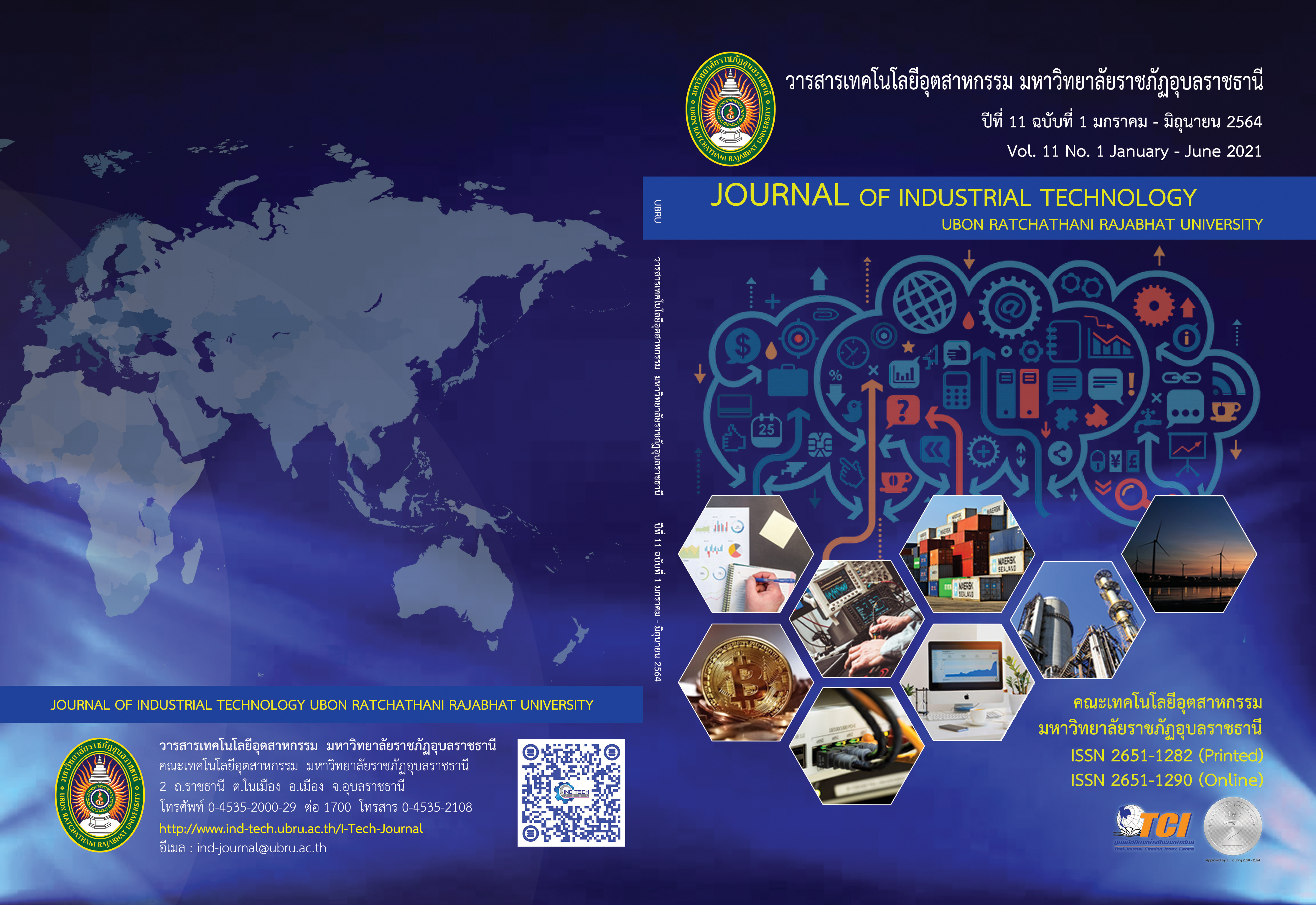การพัฒนาแอปพลิเคชันพยากรณ์การเลือกเรียนต่อตามลักษณะความสนใจส่วนบุคคล
Main Article Content
บทคัดย่อ
การพัฒนาแอ็ปพลิเคชันพยากรณ์การเลือกเรียนต่อตามลักษณะความสนใจส่วนบุคคล มีวัตถุประสงค์เพื่อศึกษารูปแบบอัลกอริทึมสำหรับการพยากรณ์การเรียนต่อที่มีประสิทธิภาพ และเพื่อพัฒนาแอ็ปพลิเคชันพยากรณ์การเลือกเรียนต่อตามลักษณะความสนใจส่วนบุคคล โดยมีกระบวนการการดำเนินงานแบ่งออกเป็น 6 ขั้นตอน 1) การศึกษาข้อมูลที่เกี่ยวข้อง 2) การพัฒนาคลังข้อมูล 3) การทดสอบด้วยอัลกอริทึมต้นไม้ตัดสินใจ ได้แก่ เจ 48 แอลเอ็มที และฮอฟดิงทรี 4) ทดสอบความถูกต้องของโมเดลด้วยการแบ่งข้อมูลออกเป็น 5 ส่วน และ 10 ส่วน 5) การพัฒนาแอ็ปพลิเคชันพยากรณ์ และ 6) ประเมินคุณภาพและความพึงพอใจการใช้แอ็ปพลิเคชัน โดยการพยากรณ์อาศัยสถิติข้อมูลเชิงปริมาณของนักศึกษาในมหาวิทยาลัยราชภัฏอุบลราชธานี จำนวน 892 คน ผลการทดสอบอัลกอริทึม พบว่า เจ 48 มีค่าความถูกต้องมากที่สุด เท่ากับ 93.1% หลังจากนั้น พัฒนาแอ็ปพลิเคชัน รวมไปถึงประเมินคุณภาพโดยผู้เชี่ยวชาญ จำนวน 5 ท่าน ผลการประเมินโดยรวม มีค่าเฉลี่ยเท่ากับ 4.16 และผลการประเมินความพึงพอใจจากนักเรียน จำนวน 30 คน พบว่า ความพึงพอใจในการประมวลผลข้อมูลถูกต้องและแม่นยำมีค่าเฉลี่ยเท่ากับ 4.60 แอ็ปพลิเคชันมีประโยชน์ต่อการเลือกเรียนต่อตามลักษณะความสนใจส่วนบุคคล มีค่าเฉลี่ยเท่ากับ 4.57 และสามารถนำผลการพยากรณ์จากแอ็ปพลิเคชันนี้ไปประยุกต์ใช้ได้ มีค่าเฉลี่ยเท่ากับ 4.53
Article Details

This work is licensed under a Creative Commons Attribution-NonCommercial-NoDerivatives 4.0 International License.
บทความที่ได้รับการตีพิมพ์ในวารสารฯ ท้ังในรูปแบบของรูปเล่มและอิเล็กทรอนิกส์เป็นลิขสิทธิ์ของวารสารฯ
References
Ministry of Education. National Education Act B.E. 2542 (1999) and Amendment; Second Education Act B.E. 2545 (2002). Bangkok: Khurusapa Publishing House, Lat Phrao; 1999. (in Thai)
The Secretariat of the Council of Education. National education plan B.E.2560-2579 (2017-2036).
Bangkok: The Secretariat of the Council of Education; 2017. (in Thai)
Rajmuangmoon J. Analysis of Classified Decision Factors the continuity Vocational Education of the Students in the Chiangrai Office of Education Service Area 1. Kasalongkham Research Journal. 2014; 8(1): p. 23-32. (in Thai)
Yamyindee P, Amdonkroy S and Jaicharad N. A Study on the Causes at Risk of Vocational Student drop outs of Bungphra Phitsanulok Commercial College, Office of Vocational Education Commission. Journal of Graduate Studies in Northern Rajabhat Universities. 2013; 3(5): p. 1-14.
(in Thai)
Holland, John L. Making Vocational Choice : A Theory o Career. New Jersey: Prentice-Hall, 1973
Jung, C. G. Psychological Types, London: Routledge’s kegan Paul Ltd., Broadway House. 1959.
Wanitbancha K. Statistical Analysis, Statistics for Administration and Research. Bangkok: Chulalongkorn University; 2002. (in Thai)
Vilailuck S, Jaroenpuntaruk V and Wichadakul D. Utilizing Data Mining Techniques to Forecast Student Academic Achievement of KasetsartUniversityLaboratory School Kamphaeng Saen Campus Educational Research and Development Center. Veridian E-Journal, Science and Technology Silpakorn University. 2015; 2(2): p. 1-17. (in Thai)
Sriraporn P. Relationship between Personality Type by Jung Typology Test™and Major selected by Business Administration students of Rajapruk University. Journal of Humanities and Social Sciences, Rajapruk University. 2015; 1(2): p. 60-9. (in Thai)

